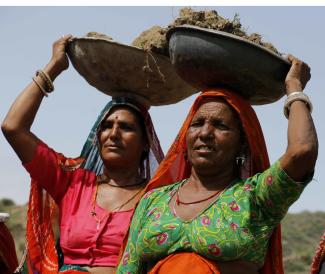Poverty targeting
Six main methodologies
Policymakers who want to reach out to poor communities can identify those groups in several ways. The six most important categories of poverty-targeting methods are the following:

- Means testing aims to identify the poor on the basis of a monetary measure, typically income or expenditure. All individuals or household below a certain threshold are then considered to be poor and eligible for support.
- Proxy means testing (PMT) uses non-monetary criteria such the quality of the dwelling, the kind of cooking fuel used in the household and/or education levels. The selection criteria should be statistically closely correlated with available monetary measures of poverty.
- Categorical targeting uses non-monetary measures such as age, sex and disability that are easy to observe and hard to manipulate. They are therefore likely to be accepted by both policymakers and the general public.
- Geographical targeting ranks geographic areas on the basis of one or more poverty measures. All inhabitants of the selected areas are potentially eligible for support. This method is often used in tandem with other targeting methods.
- Self-targeting provides specific incentives and/or disincentives to poor people. A typical example is to offer job opportunities for unskilled workers at wage rates that are below the generally prevalent level or even the official minimum wage. Another example is the subsidisation of low-quality foodstuffs which supposedly only the poor are willing to consume.
- Community-based targeting puts members of the community concerned in charge of assessing who exactly is eligible for poverty-reducing support. The selection criteria may be defined by a government authority or by the community itself.
In practice, it is common to find two or more targeting methodologies applied in distinct stages. For example, geographical targeting can be done first at the national level, resulting in a list of target counties or villages. Next, categorical targeting can be carried out in these places to select eligible individuals or households. (jb)










